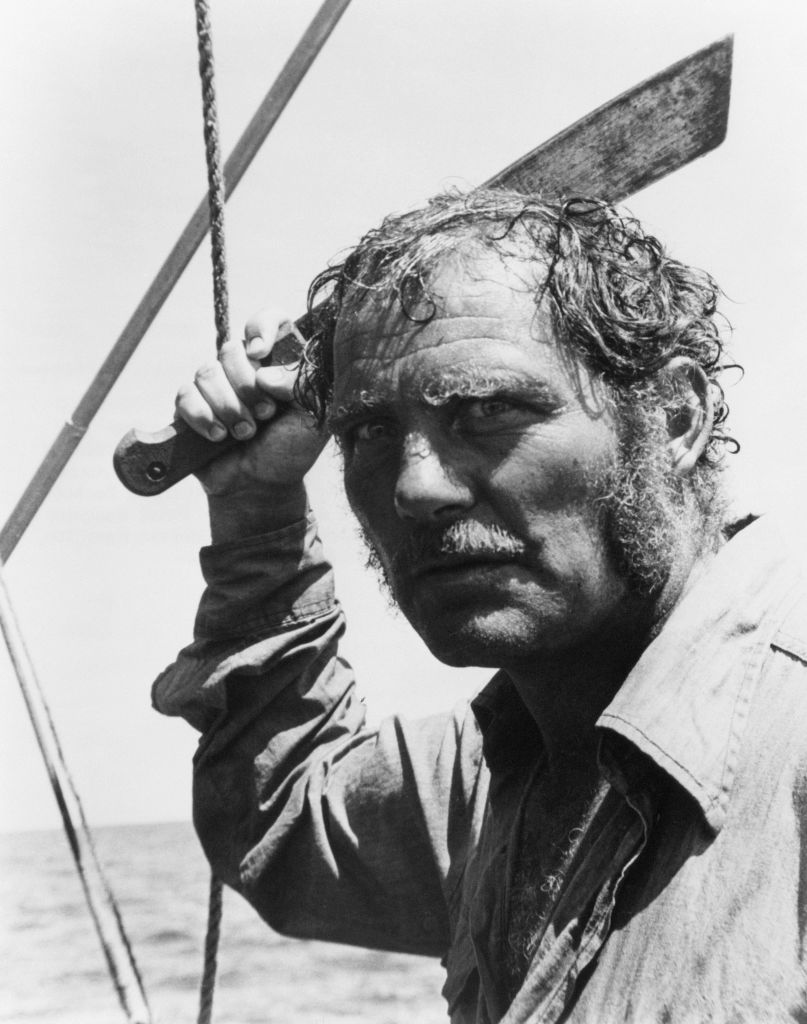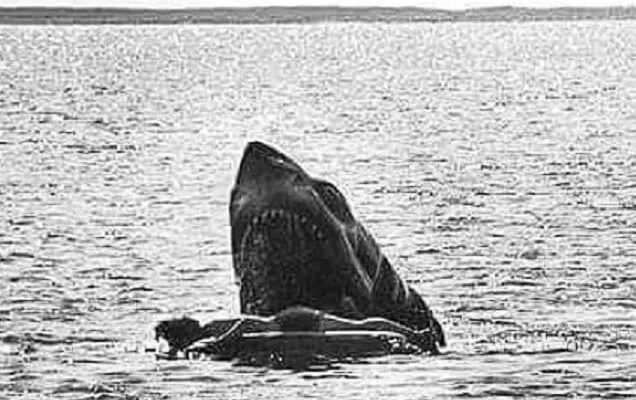Who is not a Jaws fan? For decades, swimmers have been frightened by this 1975 classic, which is still regarded as one of the best thrillers ever produced. Though its gripping narrative created a big impression, did you realize that the film is also full of interesting behind-the-scenes accidents and little-known gaffes?
The worst part is that there is a deleted scene that the majority of fans have never seen. It features a scene so eerie that it may have surpassed the shark itself. Wondering? Let’s get started!
Every time I see Jaws, which I have done at least fifty times, I am still in amazement. But if you were a child in 1975, you had to find the bravery to see the film—that is, if your parents let you go at all.
Looking at it now, it seems like they simply don’t produce movies like this anymore – films that are so well acted, filled with passion and heart, and whose goal is to offer the audience an experience they won’t soon forget.
We are grateful to Steven Spielberg for providing us with a wealth of timeless masterpieces, all of which started with this ground-breaking work.
Nobody is flawless, therefore even a masterpiece like Jaws has flaws, yet some of these peculiarities have only contributed to its legendary stature.
The real meaning of the famous sentence
The scene in Jaws where Chief Brody (Roy Scheider) is chumming the water to entice the shark is one of the film’s many memorable moments. Brody is startled by Jaws’ sudden and terrifying arrival, which leads to his now-famous comment, “You’re gonna need a bigger boat.”

However, the audience was so shocked by the shark’s presence during Jaws’ initial test screening that they were still yelling when Scheider uttered his famous line. Speilberg and the editors prolonged the scene long enough for viewers to calm down and resume paying attention after seeing the shark; he also turned up the loudness of Scheider’s voice just for good measure because he didn’t want actual viewers to miss the line.
Carl Gottlieb, the author, claims that Roy Scheider also improvised the famous statement, “You’re gonna need a bigger boat,” which only heightens the scene’s chilling enchantment.
Unsettling music by John Williams
The film became a timeless classic thanks to the spooky music by composer John
However, when director Steven Spielberg heard Williams’ music for Jaws for the first time, Spielberg couldn’t contain his laughter and remarked, “That’s funny, John, really; but what did you really have in mind for the theme of Jaws?”
Spielberg had no idea how revolutionary that straightforward, recognizable two-note song would turn out to be. Spielberg later acknowledged that the film would not have been as successful without Williams’ score. What about Williams? It was the beginning of an illustrious career.
Spielberg supported the shark.
Although Peter Benchley’s 1974 novel served as the inspiration for Jaws, it’s even more astonishing that the movie rights were acquired before the book was out.
A tip in Cosmopolitan magazine led producers David Brown and Richard D. Zanuck to the book. Brown discovered a little card with a synopsis of the narrative that concluded, “might make a good movie.” Brown’s wife, Helen Gurley Brown, was the editor.
The two were captivated after reading it over night and described it as “the most exciting thing they’d ever read.” They made Jaws a reality after purchasing the picture rights in 1973 for $175,000, or around $1.2 million in today’s currency.
It’s interesting that Spielberg said that he was actually cheering for the shark when he first read the novel because the human characters were so dreadful!
Here’s an interesting fact: Dallas hosted the original Jaws screening. At first, producers David Brown and Richard Zanuck were anxious because they thought the mechanical shark may make people laugh.
In the 25th anniversary DVD examining Jaws’ creation, Brown said, “We went and had a very stiff drink.”
But their anxieties soon faded when the lights went down. The screams began as soon as we entered the auditorium and continued unabated. We were also squeezing one another. It was amazing.
Jaws has made an incredible $476.5 million globally throughout all of its releases.
Was an Oscar denied to Robert Shaw?
Many people think Robert Shaw’s iconic performance in Jaws should have earned him an Oscar. He completely dominates every scene he appears in, from beginning to end. When discussing his terrifying experience onboard the USS Indianapolis, he conveys a startling depth of emotion despite his almost impossible intensity.
One of the scariest and most impactful scenes in movie history is Quint’s speech from “USS Indianapolis,” in which Shaw’s character describes the horrific events of the sinking.
The USS Indianapolis speech in Jaws was written by whom?
The authorship of Jaws’ famous “USS Indianapolis” speech is still up for controversy.
The speech was originally conceived by playwright Howard Sackler, but screenwriter John Milius was asked to enhance it, and the result was a 10-page monologue. Although Milius is credited by director Steven Spielberg with the lines, Robert Shaw’s editing transformed the speech into what it is in the movie. But according to co-screenwriter Carl Gottlieb, Robert Shaw wrote the final draft himself.

Gottlieb stated, “There were ten versions of that speech, including my own, but the mythology was that Milius wrote that speech somehow.”
They presented a version to Robert Shaw, who absorbed it all and shaped it into his own.
We were all having dinner one evening when he entered with a bunch of papers and declared, “I think I have the pesky speech licked,” Gottlieb recounted. And he essentially gave the table a performance. And we all exclaimed, “Wow.” “That’s what we’re shooting,” Steven added.
gave the speech while intoxicated.
When it came time to record the well-known USS Indianapolis monologue, Shaw tried to give the speech while intoxicated because he believed the late-night setting demanded it.
Sadly, there was nothing usable from that take. Later that evening, after realizing his error, Shaw called Steven Spielberg to apologize and request another opportunity. Shaw’s immaculate one-take delivery of the monologue the next day made Quint one of the most iconic characters in movies. His performance was haunting and thrilling.
Richard Dreyfuss and Robert Shaw detested one another.
Despite being well-known for his skill, Robert Shaw’s alcoholism caused conflict on the set. Roy Scheider characterized his co-star as “a perfect gentleman whenever he was sober” in subsequent interviews. After just a one drink, he became a very competitive child.
According to Carl Gottlieb’s The Jaws Log, Shaw frequently drank in between takes and once said, “I wish I could quit drinking.”
Richard Dreyfuss once snatched Robert Shaw’s drink and threw it into the ocean while filming, shocking and somewhat horrifying the crew.

Evidently offended, Shaw refused to let it go and reportedly made Dreyfuss’s life difficult for the remainder of the filming. Every time he declined, he called him a coward and tormented him incessantly, offering him $1,000 to scale the boat’s 70-foot mast and plunge into the water. When Shaw sprayed Dreyfuss with a fire hose, the situation became heated, and the younger actor stormed off, saying, “That’s it.” I no longer wish to collaborate with you. Go screw yourself.
Robert Shaw’s tragic demise
Unfortunately, Robert Shaw did not have a long life. Three years after his iconic portrayal of Quint in Jaws, the actor and author died in 1978.
The actor, who was born in England, passed away in Ireland at the age of 51 following a heart attack. Shaw abruptly became ill while driving, stopped, got out, and passed out on the side of the road.
Shaw’s Jaws co-star Roy Scheider fought cancer valiantly for over two years before passing away in 2011.
The Sandwich of Alex Kintner
Lee Fierro, who portrayed Mrs. Kintner in Jaws, entered a seafood restaurant decades after the film’s premiere and saw a dish on the menu named the “Alex Kintner Sandwich.” She was obviously interested in this. She informed the employees that she had previously portrayed Alex Kintner’s mother in the film; Alex was a little child who sadly perished at the hands of the shark.
She was shocked when Jeffrey Voorhees, who played her son Alex in the movie, rushed out of the restaurant’s rear.
Since filming that famous scene, the two have not seen one another. It was a touching reunion; they hadn’t worked together in years, but a peculiar menu item had brought them together.
The Jaws sequence that was cut
One of Jaws’ most horrifying and important scenes is when little Alex Kintner dies. This sequence has always been the most eerie and unsettling to me, and a deleted scene that depicts the death in its whole would have only made me feel more terrified.

The original idea was to depict the shark consuming Alex after breaking the surface. In the original version, the shark was meant to jump out of the water and capture the doll and raft in its mouth while a doll of Alex floated among the bathers.
But it continued to misfire, either coming out of the water too high, not high enough, or missing the raft entirely, as was common with the mechanical shark.
In an attempt to imitate the actions of a real shark, the shark eventually managed to grasp hold of the raft and rolled over on its side. Spielberg made the decision to employ this take.
The truth about the scene with Alex Kintner
The producers, however, were concerned that the shark’s mouthing Alex was too unsettling and might compromise the movie’s PG certificate. Consequently, Spielberg and editor Verna Fields decided to cut the opening of the scene so that only the shark’s fins were seen for a brief moment as it overturned.
There are other ideas as to why the entire scenario was eventually omitted. According to one idea, Spielberg had to keep the mechanical shark secret for a large portion of the movie due to its frequent malfunctions, which increased the suspense. Another explanation put up is that Spielberg didn’t want to introduce the shark too early in the film and the scene was just too gory and startling for viewers.
Although there isn’t any complete film of the deleted segment, viewers might speculate about what might have been after seeing brief clips in a documentary on the Jaws Blu-ray.
Orca, the enigmatic vessel
Quint’s renowned shark-hunting vessel, the Orca, has a somewhat ethereal feel about it, particularly given its yellow barrels and the name “ORCA” printed on the back.
There’s a great little joke about the barrels in Jaws for anyone with an eye for detail. The Orca has five yellow barrels when the crew leaves. Quint passes them with his harpoon gun when they successfully insert the third barrel into the shark, but to his amazement, there are still three barrels left!
As if that weren’t enough, the word “ORCA” on the boat’s back is constantly shifting from rusted to gleaming in different shots. Additionally, did you note that for the remainder of the film, the machete that Quint drives into the Orca’s starboard side keeps going missing and then coming back?
The tree of cherries
Only anyone with a keen eye or extensive understanding of plants and trees may discover this small error. The next time you see the film, look out for this: Jaws opens with a picture of a cherry tree in full blossom.
around reality, cherry trees bloom around May, although the movie takes place in July.
The movie Jaws never stops offering. Keep an eye out the next time you watch since you might notice something new or even a little strange, which would enhance the allure of this renowned thriller.
When you’re prepared for another incredible journey, don’t forget to leave your comments and return to Jaws!




